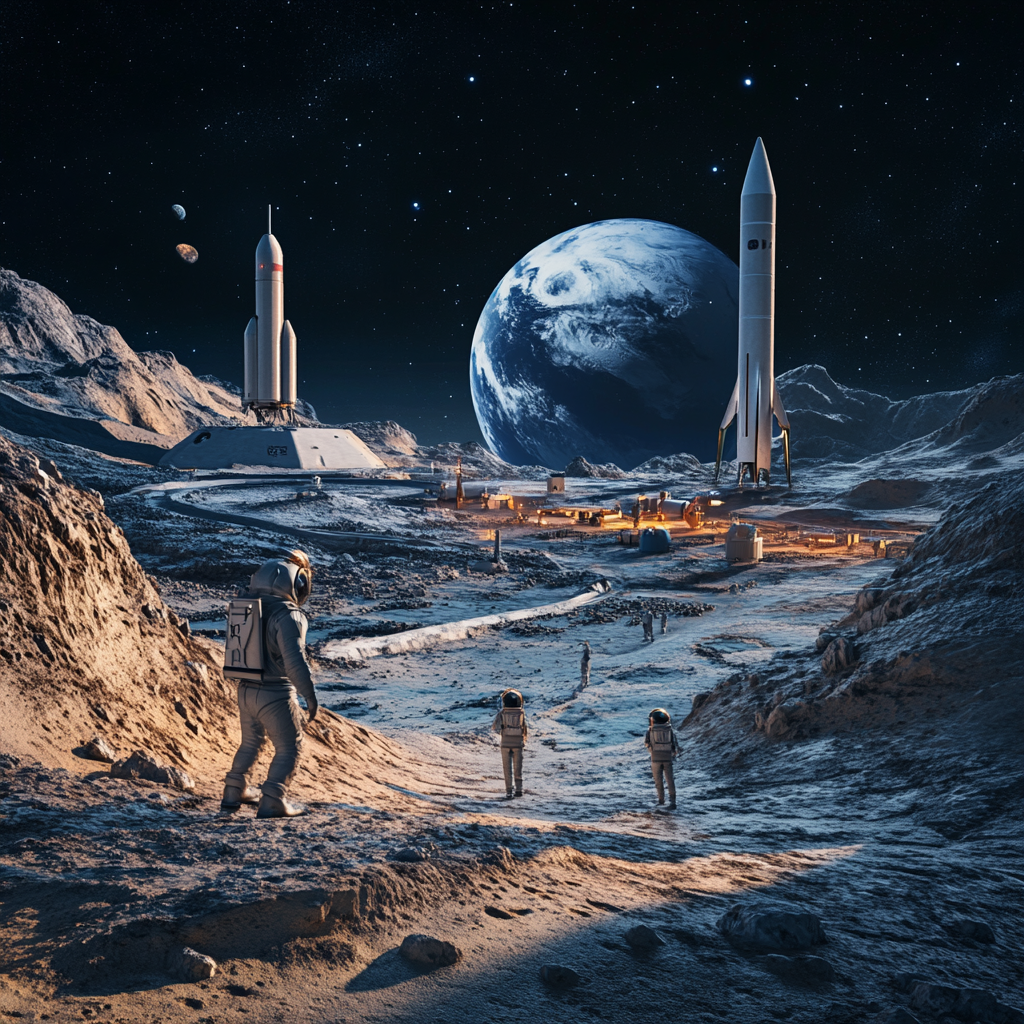
“SpaceX and NASA Unveil Starship’s Role in Lunar Missions (Images)”
In the grand theater of cosmic ventures, the stage is undeniably set by SpaceX and NASA—a duo that’s launching humanity into a new lunar narrative. Enter the Starship, the spacecraft that’s taking us back to the Moon and potentially beyond, like some 21st-century chariot of fire. Yet, the Moon isn’t merely a celestial body; it is a tantalizing breadcrumb on the path to Mars and the freshly unfathomed marvels of space.
Artemis: A Bold New Dawn
Let’s kick things off with NASA’s Artemis program, which is essentially a cosmic renaissance. The initiative isn’t just about old-school moonwalking; it’s about planting a flag for sustainability and exploration. Imagine the Moon not as a desolate rock, but as a hub of human activity, with astronauts engaging in mineral scavenging and laying the groundwork for future Mars missions. What kind of sci-fi dream is this? Well, it’s not far from reality thanks to our friends at SpaceX, which has been tasked with building the Starship Human Landing System (HLS) under a gargantuan contract worth $2.89 billion. Yes, you read that right: billions!
The Cosmic Essentials
So, what exactly does our starship do? Picture this: astronauts hitching a ride from lunar orbit down to the Moon’s surface. Inclusion is high on the list, as Artemis plans to send the first woman, the first person of color, and even an international astronaut to embrace the lunar dust. It’s a monumental step, not just for exploration but for representation in the final frontier.
Starship HLS: A Marvel of Engineering
Let’s dig deeper into the mechanics of the Starship HLS, a uniquely-tuned variant that is as advanced as a V8 engine in a world of sedans. This beast is launched into Earth's orbit atop a Super Heavy booster, powered by a staggering 33 Raptor engines, cutting through the atmosphere like a hot knife through butter. Once in orbit, it undergoes the magical act of refueling via Starship tanker spacecraft before rocketing off towards lunar glory. I mean, when you start imagining these refueling gatherings in space, you can’t help but chuckle at the vision of interstellar gas stations.
Once it hits lunar near-rectilinear halo orbit (NRHO) like a returning hero, it has a rendezvous with the crewed Orion spacecraft launched by NASA's very own Space Launch System (SLS) rocket. Astronauts transfer gracefully from one vessel to another—a dance of engineering elegance if you will—before the Starship HLS descends to the Moon’s surface, all while being guided by a symphony of engineering prowess.
Fueling the Future: Lessons from Testing
Testing has been making the headlines as SpaceX conducted its third integrated flight test of the Super Heavy booster and the Starship upper stage. March 14, 2024, was a date marked by revolving jaws in the engineering world as the rocket screamed into the skies. Successful separation from the booster? Check. Full-duration ascent burn? Check. Propellant transfer? Double check. For those of us on the ground, it’s not just a test; it’s a statement that humanity is serious about re-occupying the Moon.
One pivotal takeaway from these recent experiments is understanding how super-cooled propellant behaves while it’s whipping around in the tanks during the flight. Think of it as trying to understand the behavior of jelly in a rollercoaster; it’s essential to know how it sloshes to ensure our mighty Starship stays on course and upright.
And let’s talk about docking systems. NASA and SpaceX have completed the rigorous qualification testing of the docking adapter, a quick-connect that allows the Starship to tango with Orion and the Gateway space station like seasoned ballroom dancers. If you’ve ever struggled with twist ties on bags of bread, you might appreciate just how intricate this magic act is.
Missions to Come: The Adventure Awaits
We all love the “next big thing,” and for Artemis, that’s Artemis III—slated for launch in September 2026. Picture it: astronauts will stand on the Moon's South Pole, digging in and exploring for about a week. Who knows? Maybe they’ll find treasure, or at least a really nice rock. Meanwhile, cargo missions are also on the books. Starship, alongside Blue Origin’s landers, is set to deliver major payloads, including cutting-edge rovers and habitats to facilitate life on the lunar surface, making this a golden age for space exploration.
Imagine a future in our lifetime where lunar colonies are sprouting like mushrooms after a rainy day. That’s the blueprint laid out by NASA and SpaceX, two key players in humanity's celestial chess game.
In Conclusion: A Call to Action for Dreamers
The collaboration between SpaceX and NASA is not just a tale of technological triumph; it’s a beacon of human resilience and ambition. We are rapidly approaching a horizon where space is an extension of our earthly existence, with every test flown and every milestone reached bringing us closer to our celestial dreams.
So if you’re as thrilled about this solar saga as I am and want to keep your finger on the pulse of neural networks and automation—akin to keeping an eye on the shimmering stars—then I’ve got just the invitation for you. Want to stay up to date with the latest news on neural networks and automation? Subscribe to our Telegram channel: @channel_neirotoken.
Ultimately, we stand on the verge of yet another golden age of exploration. And who knows? Maybe you’ll be part of the generation that takes that leap onto extraterrestrial soil! Stay tuned for more cosmic plights and lofty adventures.

